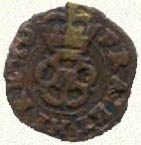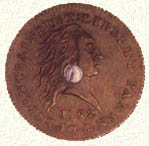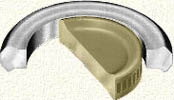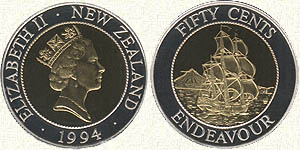| The basic idea of bi-metallic coins is not a new one. What is considered by many as one of the earliest strikings of bi-metallic prototypes dates back to 1730, when a silver token with a center copper plug was struck in Cologne, Germany. However, during the reign of Charles I, the English Rose Farthing 1625-1649, had a brass wedge inserted into the copper as an anti-forgery device. |  1625-49 Rose Farthing |


